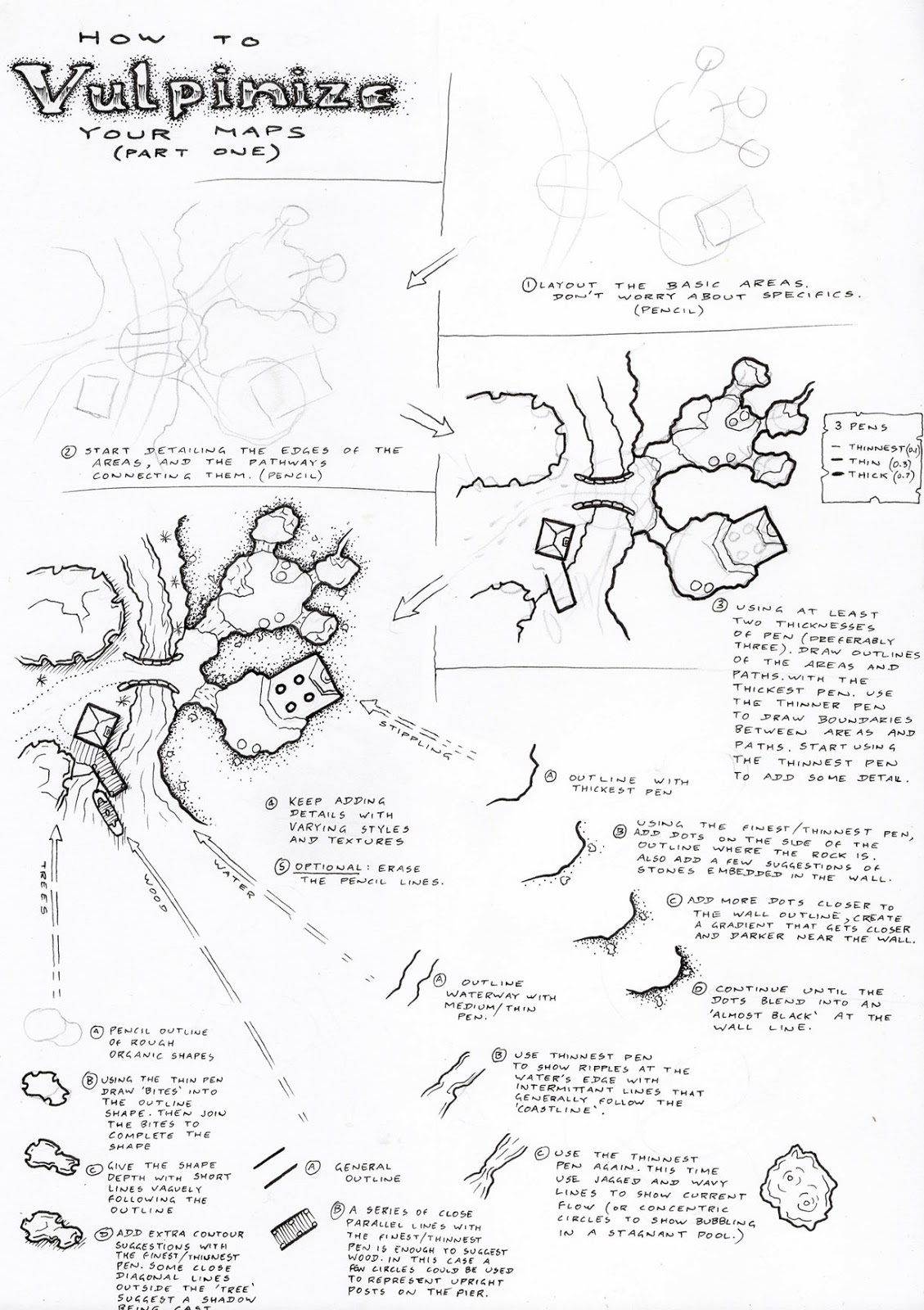A Gaming Folder (part 6) - Physical Maps
I've got a thing for maps...all of the top few posts I've created over the years have been about helping people to draw better maps and understand how maps can be better incorporated into their games (for examples, see here, here, and here).
Sure, there are heaps of Virtual Table-Tops (VTs or VTTs) around these days, but this series is analogue, and I like the feel of making marks on a page with a pen or pencil in my hand.
When I include maps in my gaming folders, I like to make sure to start with things that are immediately relevant for the players. The immediate buildings and landscape around the point where they start, the local region including places they might be able to travel to in the first session, then maybe a wider map of the country/continent/world. If it's a sci-fi game, this might be swapped out for a star system chart and possibly a sector chart. Half a dozen maps to start things off usually covers the "needed" preparations.
Once a map hits the table, it's psychological; people start thinking more strategically and methodically, it slows the game down. Half a dozen maps, at a minimum of half an hour each should sustain a 3 hour game. I tend to use quite a bit of theatre of the mind between these strategic moments to pad the session out further. However this is played instinctively, according to the needs of the group and the developing storyline.
It sometimes helps to allocate one or two players to the role of group cartographers in a game. As maps are used, a copy could be given to them that can be written on and changed as necessary during the course of play. I'd keep a master copy in the main map part of the folder, probably annotating this myself for the various details that emerge during play. Such maps automatically restrain the imagination of the players to the specifics detailed in them, this isn't a good thing, nor is it a bad thing, it just is. Having a restrained imagination prevents excesses of narrative imagining ("You can't do that here, there's a wall in the way"), but it similarly helps limit miscommunication about what is happening in a situation.
At the end of a session, I might be adding another map or two. If the players are moving somewhere new, they might get a regional map to show where they're travelling, or a key location they encounter along the way. Then there might be a new map to show the new town/castle/fortress/temple-complex that greets them at the far end of their journey. If the players are staying relatively stationary, I'll add a new map location for them to explore nearby, maybe a new shop, tavern, junkyard, fishing spot, or whatever is appropriate to the genre. If players don't explore the new location, then it just stays in the folder for later, and I'll add less new map options in a later session.
It's all about being flexible, but not too flexible. The folder is probably a part of a smoke-and-mirrors effect that makes it look like the storyline was planned from the beginning, but it generally follows the choices of the players to an extent.





.png)

Comments